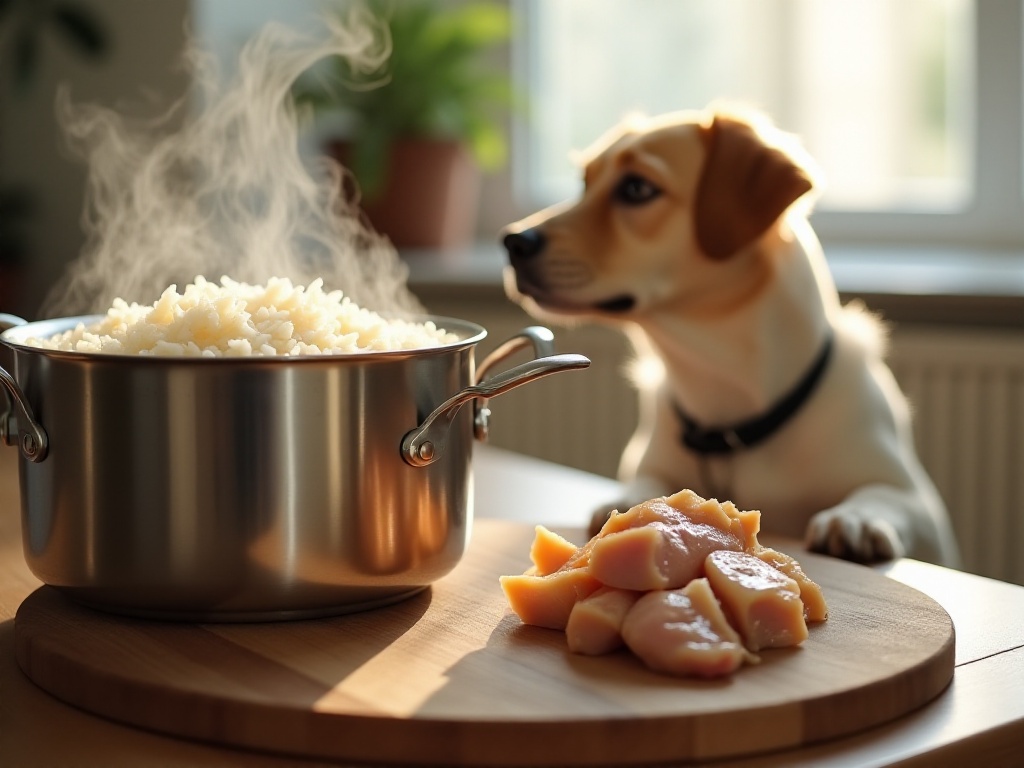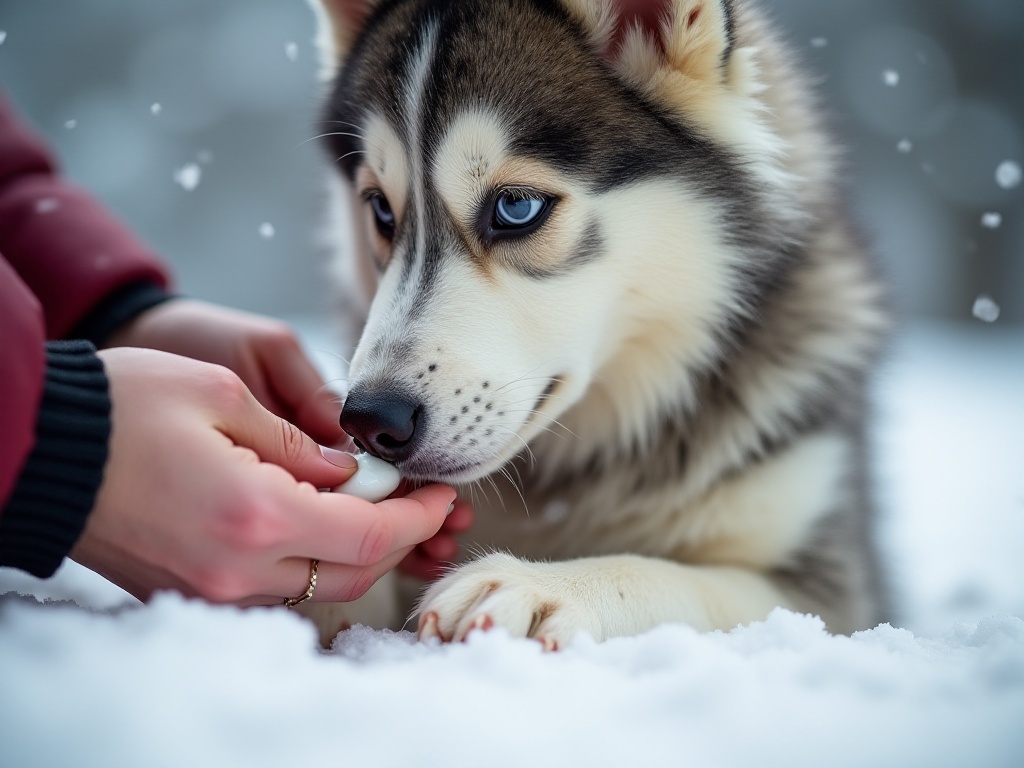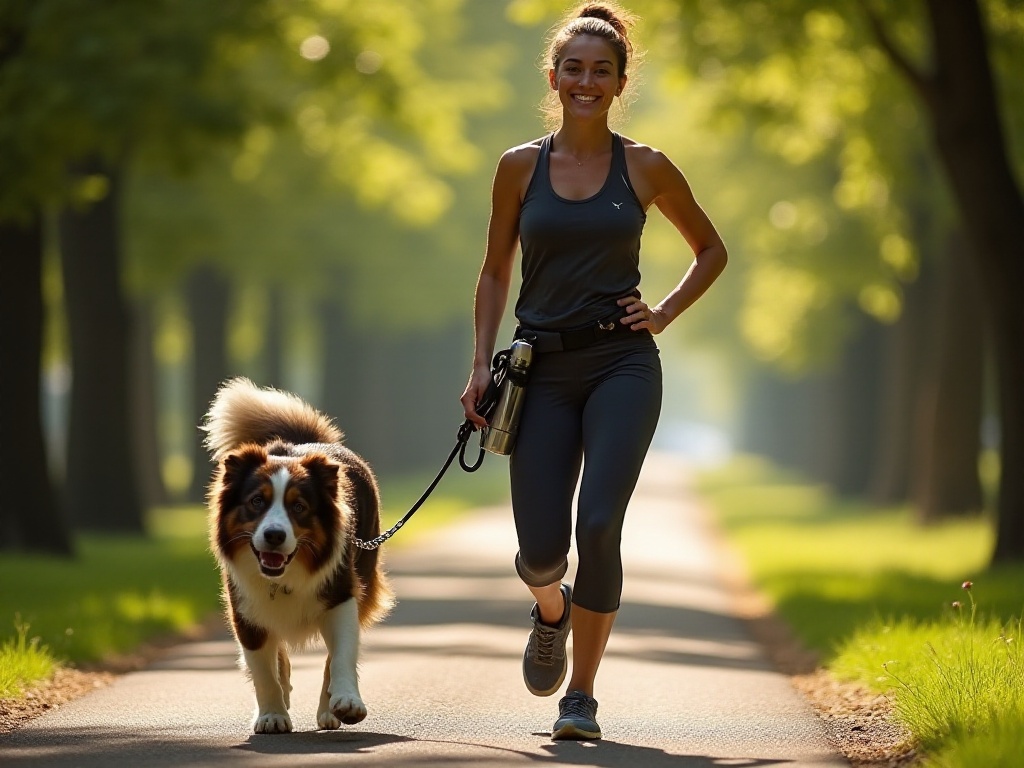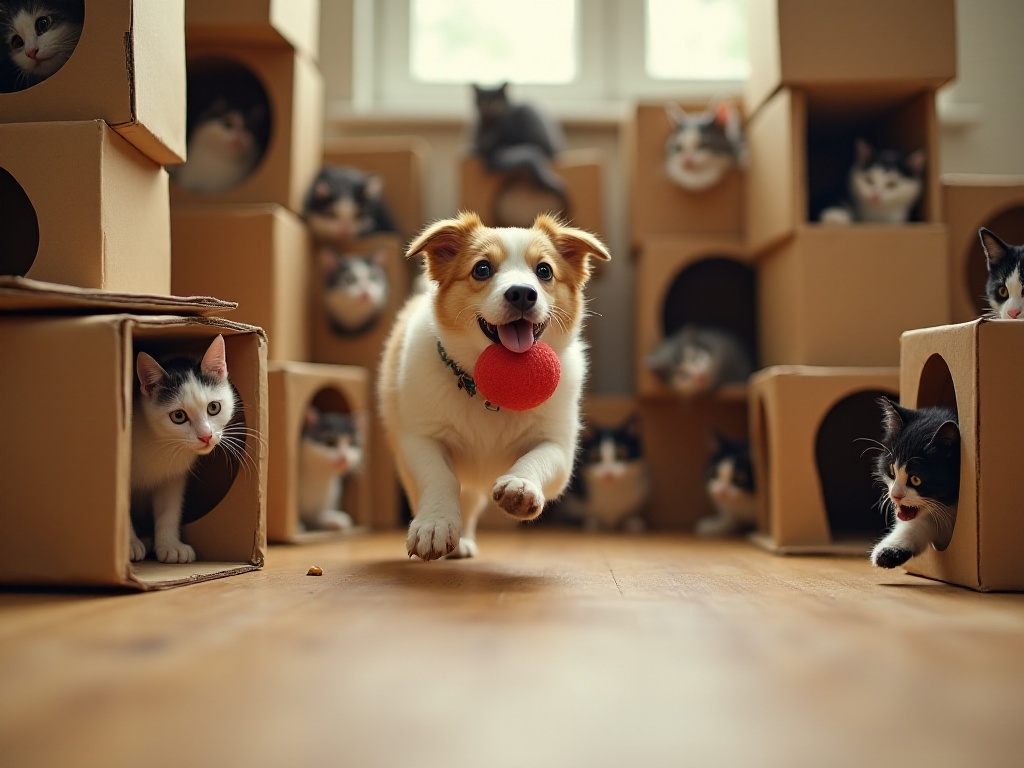Opening Words
Hello everyone! As someone who has been raising dogs for five years, I'd like to share some particularly useful pet care tips with you today. From being completely overwhelmed at the beginning to now being quite experienced, I've made many mistakes and gained lots of experience along the way. I remember when I first started raising dogs, I was a complete novice who couldn't even figure out the basics of feeding. However, after years of exploration and learning, I can now take good care of my furry friend. All of these are experiences I've personally practiced, which I believe will be very helpful for you.
Daily Care
When it comes to pet care, daily care is both the most basic and most important aspect. Many novice pet parents might think that raising pets is just about feeding and walking, but there's actually much more to learn. Daily care isn't just about basic needs like eating and eliminating; it involves every aspect of our furry friends' lives, including diet, cleanliness, exercise, and more. Each aspect requires us to invest sufficient time and energy to ensure our furry friends grow up healthy and happy.

Dietary Wisdom
I remember the first time my dog had an upset stomach, I was so worried. Later, I learned a particularly effective method from an experienced vet - chicken with rice. This recipe is absolutely a lifesaver for digestive issues. The preparation is simple: cook the chicken, remove the bones and skin, then mix it with white rice in a 7:3 ratio. You can also add some low-sodium chicken broth to their drinking water, which not only provides nutrition but also increases appetite.
Actually, when treating a dog's digestive system, both ingredient selection and cooking methods are important. Choose skinless chicken breast, as chicken skin contains too much fat and can burden the digestive system. Cook the chicken in plain water without any seasonings. Rice should preferably be steamed as it's easier to digest. If your dog is particularly picky, you can add a little pumpkin puree to the rice, which both adds nutrition and increases the dog's appetite.
Speaking of diet, many urban dogs now share a common problem - being overweight. Did you know? According to data from the China Companion Animal Veterinary Association, the obesity rate among urban pet dogs in our country is as high as 45%. This number is truly alarming, indicating that nearly one in every two urban dogs has a weight problem. Obesity not only affects dogs' mobility but also increases the risk of many diseases, such as arthritis and heart disease.
For this issue, I have a particularly effective weight loss secret: the green pea substitution method. How does it work? Reduce the amount of regular dog food slightly and add cooked salt-free green peas. This helps them feel full without consuming too many calories. Green peas are rich in dietary fiber and protein but low in calories, making them an ideal weight loss ingredient.
There are several important points to note when implementing a weight loss plan. First, weight loss should be gradual, not rushed. Suddenly reducing food intake significantly might lead to malnutrition. Second, observe your dog's energy levels - if you notice they're particularly lethargic or showing unusual symptoms, adjust the diet plan promptly. Finally, exercise should also be increased appropriately, as controlling diet alone isn't enough.
In daily diet, nutritional balance is also very important. Besides main meals, we need to pay attention to supplementing certain nutritional elements. For example, calcium is crucial for dogs' bone development, especially for puppies and senior dogs. You can add some calcium tablets or powder, but strictly follow the dosage instructions as excessive calcium supplementation can have side effects.
Vitamin supplementation is also key. Although modern dog food contains necessary vitamins, if you're making homemade dog food, you'll need to pay special attention to vitamin supplementation. You can choose specific pet vitamin supplements or add vitamin-rich foods like carrots and broccoli. However, vegetables must be cooked before feeding to dogs as raw vegetables are harder to digest.
Water intake is also an important aspect of diet. Many dogs don't like drinking water, so we need to find ways to increase their water intake. Besides the previously mentioned method of adding low-sodium chicken broth, you can try these tips: place water bowls in different locations to increase drinking opportunities; use flowing water fountains as many dogs prefer running water; add some water to dry food, such as mixing warm water with kibble.
Heat Relief
Summer's here, so how do we keep our furry friends cool? My favorite is the "ice cube toy." Freeze your dog's favorite toys or treats in water to create ice blocks - it keeps them entertained while helping them cool down. For instance, I often freeze a Kong toy filled with peanut butter, which keeps my dog entertained all day.
Besides ice cube toys, there are many other ways to beat the heat. For example, you can set up a small swimming pool for your dog to play and cool off in. However, make sure the water isn't deeper than your dog's belly to prevent accidents. Also, place the pool in a shaded area and ensure the water isn't too cold to prevent your dog from catching a chill.
Indoors, you can use air conditioning to help your dog stay cool, but don't set the temperature too low - the difference between indoor and outdoor temperatures shouldn't exceed 5-8 degrees, otherwise your dog might catch a cold. If you don't have air conditioning, you can use a fan, but don't point it directly at your dog. You can also lay out a cooling mat or ice pad for your dog to lie on.
The timing of walks also needs attention in summer. It's best to avoid the hot midday hours and choose cooler morning or evening times. Check the ground temperature before heading out - if it feels too hot for your palm, it's too hot for your dog's paws. In such cases, choose a different time or walk on cooler surfaces like grass.
While keeping cool, don't forget about sun protection. Although dogs have fur protection, some areas are still susceptible to sunburn, like their nose and ears. You can apply special pet sunscreen, especially for dogs with white or light-colored fur.
In hot weather, pay special attention to your dog's condition. If you notice excessive panting, lethargy, decreased appetite, or other symptoms, take cooling measures promptly and seek veterinary care if necessary. Heat stroke is one of the most common summer problems, and prevention is better than treatment.

Daily Cleaning
Besides diet and heat relief, daily cleaning is another crucial aspect of care. Many people might think dogs can clean themselves, but that's not the case - we need to help them with some basic cleaning tasks.
First is brushing, the most basic cleaning task. Different dogs need different brushing frequencies - long-haired dogs might need daily brushing, while short-haired dogs might only need it 1-2 times per week. Brushing not only removes loose fur and dirt but also promotes blood circulation, making the coat healthier and shinier.
Brushing tools are also important and should be chosen based on the dog's coat type. For example, double-coated dogs need special deshedding brushes, while curly-haired dogs need pin brushes. Be gentle when brushing to avoid hurting your dog's skin.
Bathing is another important cleaning aspect. Bathing frequency should be determined by your dog's activity level and environment - generally, 1-2 times per month is sufficient. Bathing too frequently can damage the protective layer of your dog's skin. Use special dog shampoo, as human shampoo is too harsh for dog skin.
Before bathing, brush out any tangles in the fur. Water temperature should be moderate - neither too hot nor too cold. Be careful not to get water and shampoo in your dog's eyes and ears during bathing. After bathing, dry your dog thoroughly, especially inside the ears, as remaining moisture can lead to ear infections.
Dental cleaning shouldn't be neglected. Without timely cleaning, dogs can easily develop tartar, leading to oral problems. It's best to establish a daily tooth-brushing routine using special dog toothpaste and toothbrush. If your dog won't cooperate with brushing, you can use dental chews or cleaning toys to help maintain dental hygiene.
Ear cleaning is also important, especially for breeds with drooping ears. Check ears weekly, and if you notice dirt, clean with special ear cleaner. Be gentle during cleaning to avoid damaging the ear canal. If you notice an odor or your dog frequently scratches their ears, seek veterinary care promptly.
Nail trimming is essential too. If your dog frequently walks on hard surfaces, their nails might wear down naturally. But if they mainly walk on soft surfaces, regular nail trimming is necessary. Be careful not to cut into the blood vessels inside the nails - it's best to have this done by professionals or at a veterinary clinic.

Environment Management
Honestly, cleaning is the most headache-inducing aspect of pet ownership. Especially urine stains on carpets - they're a nightmare. But I've discovered a super effective trick: combining baking soda and vinegar.
Here's how to do it: first absorb the urine with paper towels, then spray the stain with a solution of equal parts water and white vinegar, finally sprinkle baking soda over it. Once completely dry, vacuum it up. I've used this method many times with great results - it even removes stubborn odors.
Besides handling stains, regular environmental cleaning is important. Areas where dogs are active need frequent cleaning, especially their resting spots. You can use mild cleaners to wipe floors and furniture, but be careful in choosing cleaners - use pet-safe products.
Dog beds need regular washing too - it's best to have two beds to rotate. This way, one can be washed while the other is in use, maintaining cleanliness without leaving your dog without a place to rest. Choose machine-washable materials and ensure beds are completely dry before use.
Odor control is another important issue. Besides prompt waste cleanup, you can use natural deodorizing methods. For example, placing activated charcoal or fresh lemon slices in the room works well for odor control. Avoid chemical deodorizers as they might irritate your dog's respiratory system.
If you have multiple pets, environment management requires even more attention. Provide separate food and water bowls for each pet and disinfect regularly. Separate elimination areas to avoid interference. Also, provide each pet with their own rest area to reduce conflicts.
Outdoor Activities
Advanced Dog Walking
Walking dogs might seem simple, but there are techniques involved. I highly recommend the "hands-free walking method." This involves using a carabiner to attach the leash to your belt or backpack. This not only frees up your hands but also makes walking more comfortable. Using this method, I can often take photos or answer calls while walking my dog - it's very convenient.
However, before using the hands-free method, make sure your dog has good basic obedience training. If your dog can't follow well and suddenly chases after something, they might pull you down. So start with basic training, teaching commands like "sit," "wait," and "follow."
Timing and route selection for walks also matter. Early morning and evening are ideal for walks when temperatures are moderate and there are fewer people around. Choose routes based on your dog's stamina and age - younger dogs can walk further, while senior dogs need shorter distances. It's good to have several fixed routes to rotate between, preventing boredom while maintaining regularity.
Pay attention to the surroundings during walks. When encountering other dogs, maintain appropriate distance - don't let dogs get too close to each other. When meeting unfamiliar people or objects, give your dog time to adjust - don't force them to approach.
Carry essentials when walking your dog, such as treats, water, and waste bags. Treats can reward good behavior, water prevents thirst, and waste bags are basic responsible pet ownership.
Seasonal Care
In winter, protecting your dog's paws is crucial. My tip is to apply petroleum jelly to their paw pads before going out. This not only prevents pad cracking but also protects against damage from snow-melting salt.
Winter outings also require attention to warmth. Although dogs have fur, they still need additional protection in particularly cold weather. You can dress your dog in special dog clothes, but choose appropriate sizes - neither too tight nor too loose.
Spring is peak allergy season. If you notice your dog frequently scratching or sneezing, check for pollen allergies. Choose walking routes away from areas with abundant flowers and grass, and wipe your dog's body with a damp cloth after walks to remove potential pollen.
In autumn, prevent your dog from eating fallen leaves or fruits. Some plant fruits are toxic to dogs, so pay special attention to your dog's actions during walks. If you notice your dog trying to eat things off the ground, stop them promptly.

Conclusion
Pet care definitely requires a lot of thought, but once you master these techniques, you can help your furry friends live more comfortably and healthily. Do you have any unique pet care tips? Feel free to share in the comments.
Remember, each pet is unique, so adjust these methods according to your pet's specific situation. If you found this article helpful, don't forget to share it with other pet parent friends.
Raising pets is a joy-filled experience. Although you'll encounter various challenges along the way, seeing your furry friends healthy and happy makes it all worthwhile. I hope this article helps you better care for your pets and make their lives more wonderful.
Related articles




